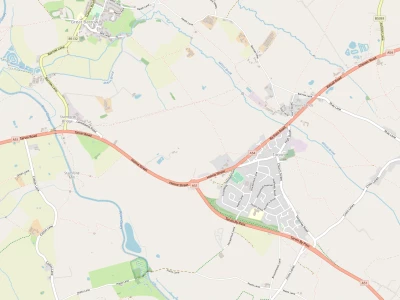The Blue Tit
Cyanistes caeruleus
Right click on the birdsong link to listen to the song of the blue tit in a separate tab while you read this article:Blue Tit Song

The Great Tit might be the species that occupies the majority of our nest boxes but it is probably the Blue Tits which are most frequently seen and, with their trilling, 'tsee-tsee-tsee' song, also most frequently heard. The colourful mix of blue, yellow, white and green makesthe blue tit easily one of our most attractive and most recognisable woodland birds. Whether searching through the trees to find caterpillars and aphids or visiting the bird feeders to tuck into the high-energy food we provide, they are a joy to watch. They are very agile and can hang from almost anywhere – in my childhood, my father used to hang up a marrowbone (intended for the dog) just outside the kitchen window so that we could watch their truly amazing acrobatics.
Smaller than the great tit, the blue tit is easily recognised, with its blue crown, white cheeks, blackeye-stripes, a greenish-blue back, yellow belly, and blue wings and tail. Like most birds, blue tits can see ultra-violet (UV) light. Studies have shown that the blue crown on their head glows brightly under UV light. The brightness of the feathers is thought to provide a variety of signals; for instance, male blue tits have been shown to choose females with more-brightly coloured crowns as they are thought to make better mothers.
As a rule, blue tits roost in dense plants such

as ivy or evergreens, but in harsh winters they will roost wherever there is a suitable small hole, be it in a tree or nesting box. They will nest inany suitable hole in a tree, wall, or stump, or in an artificial nest box, often competing with house sparrows or great tits for the site (although, in our woodland, the great tit seems to be more successful). The nesting material is usually moss, wool, hair and feathers, and the eggs are laid in April or May. During the incubation period, female blue tits perform all of the incubation; however, the male does feed the female during this time. The number in the clutch is often very large, although seven or eight eggs are quite normal. It is not unusual for a single bird to feed the chicks in the nest at a rate of one feed every 90 seconds during the height of the breeding season. The successful breeding of blue tit chicks is dependent on a sufficient supply of green caterpillars as well as satisfactory weather – breeding seasons may be affected badly if the weather is cold and wet between May and July, particularly if this coincides with the emergence of the caterpillars on which the nestlings are fed.
The survival rate for juveniles in their first year is about 38%, while the adult annual survival rate is thought to be around 53%. These figures would suggest that the typical lifespan is only three years, although birds of up to 10 years have been recorded during studies of ringed birds. The small size of the blue tit makes it vulnerable to predation by larger birds such as jays who catch fledglings when they leave the nest. The most important predator is probably the sparrowhawk, closely followed by the domestic cat. Nests may also be robbed by mammals such as weasels and squirrels.
How fortunate are we to be surrounded by and to be able to watch these tiny, colourful, cheeky, cheerful, agile little birds? There is so much going on in the woodland – do take the time to sit for a while and watch the other (non-human) users. You will be well-rewarded!
Quick Links
Get In Touch
TarvinOnline is powered by our active community.
Please send us your news and views.







